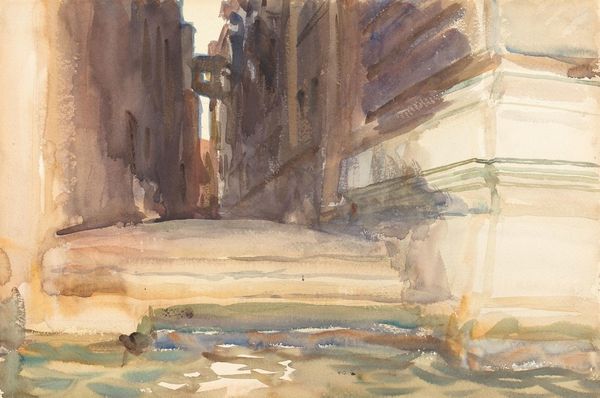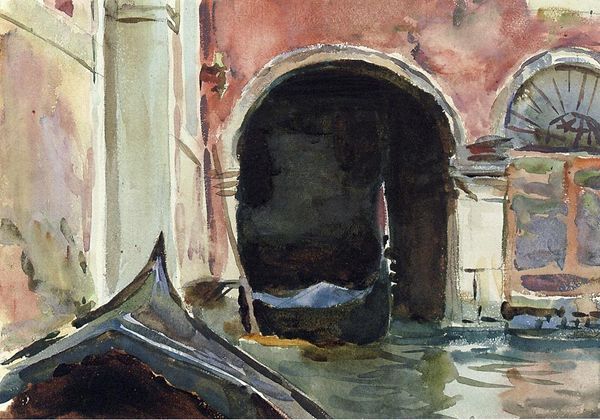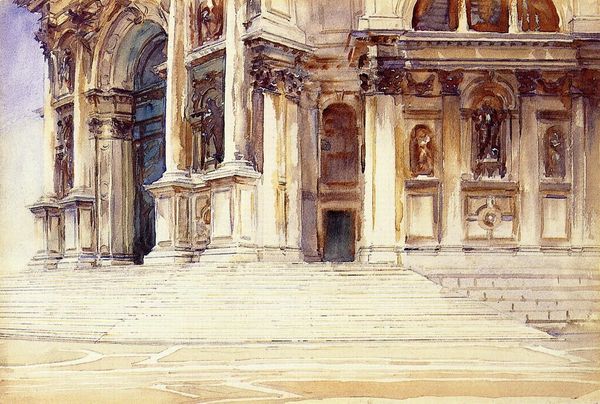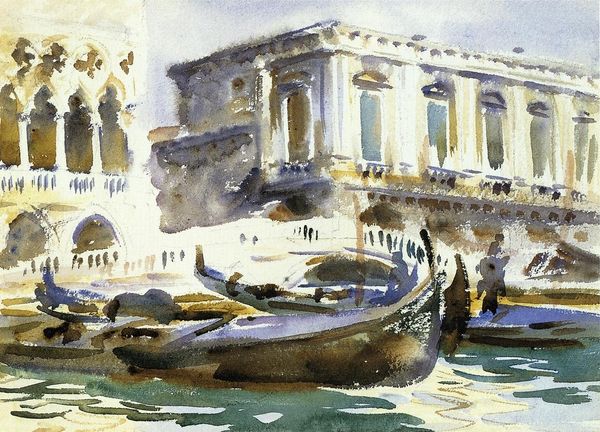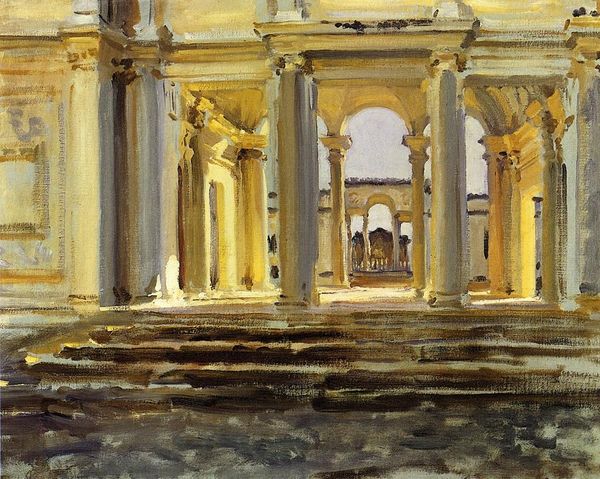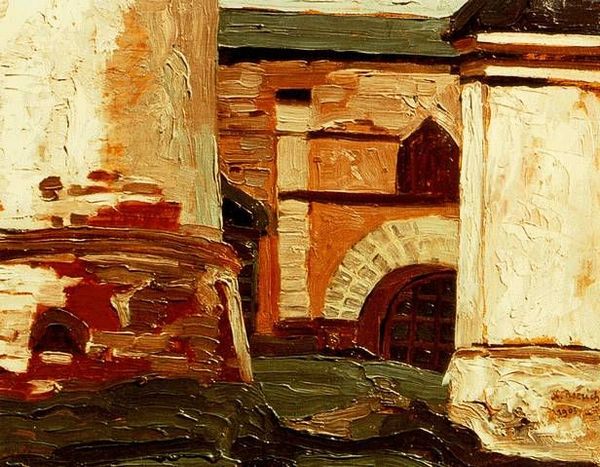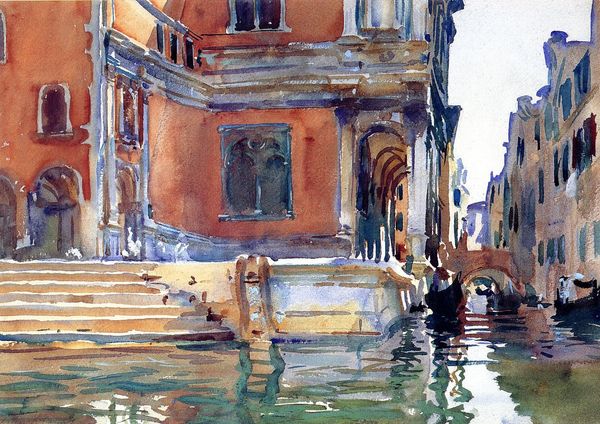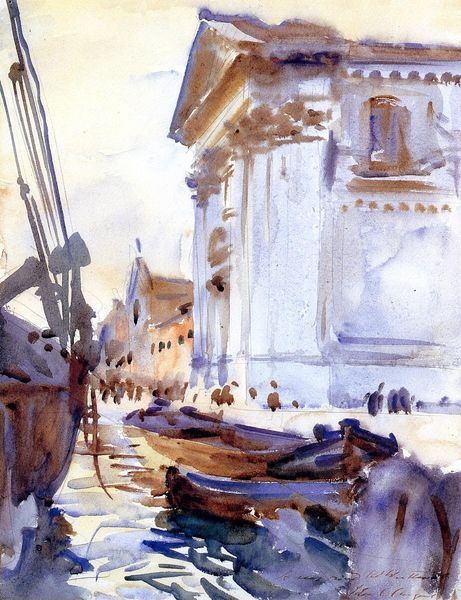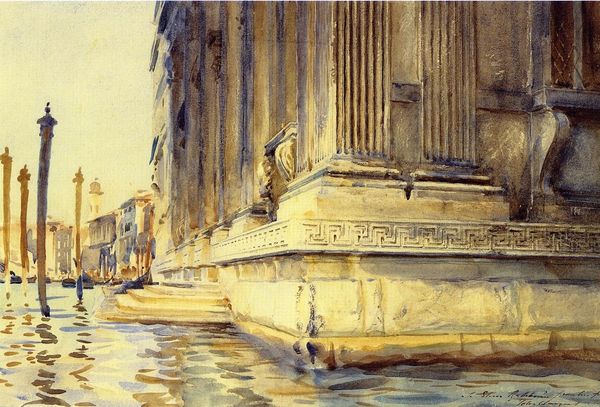
Dimensions: 25.4 x 35.56 cm
Copyright: Public domain
Curator: This is John Singer Sargent's watercolor, "Steps of a Palace," created in 1903. Editor: It's immediately striking—almost austere. The play of light and shadow across the architecture is what catches the eye first. I wonder where this place is and who labored to create it. Curator: Most likely, it's Venice, a place Sargent visited repeatedly, drawn by its luminosity and, more importantly, its architectural infrastructure. These crumbling yet elegant steps are more than aesthetic; they're physical manifestations of history, labor, and privilege, specifically gondoliers who must work, day in and day out, on these stairways. What materials was used for those building blocks? Editor: I agree. Thinking about Venice and its legacy—a city built upon trade, conquest, and social stratification, the artist skillfully portrays these issues. This composition emphasizes scale, no doubt highlighting the power associated with these palaces along the water and, ultimately, making evident class differences in an epoch of lavish wealth and brutal marginalization. Curator: Exactly. What I find particularly compelling is how Sargent manipulates watercolor to mimic the deterioration of the palace structure itself. The almost granular quality of the pigments reflects the very decay it represents. I mean, it raises a lot of questions about consumption and waste. Were the building materials locally sourced or transported? And who paid the price? Editor: Absolutely. The choice of perspective is vital to its overall purpose; from the bottom looking up. Consider the perspective of marginalized people then. Water being vital for transportation of food, the figure becomes, like the structure itself, a piece of a giant production, if not capitalistic, machine that requires exploitation of physical and natural resources to work efficiently. What is luxurious for the upper classes is physical hard work and risk for the underpaid and less protected. Curator: He renders it so beautifully, almost paradoxically. The skill required to evoke that feeling of grandness but to underscore that what is sublime to many is connected to exploitative processes—is quite thought-provoking. Editor: Ultimately, Sargent's "Steps of a Palace," forces us to question who really gets to enjoy life at the literal and figurative palace and how those hierarchies persist even today. Curator: Agreed. A reminder that every piece, regardless of medium or execution, carries material and labor costs, both visible and invisible.
Comments
No comments
Be the first to comment and join the conversation on the ultimate creative platform.
